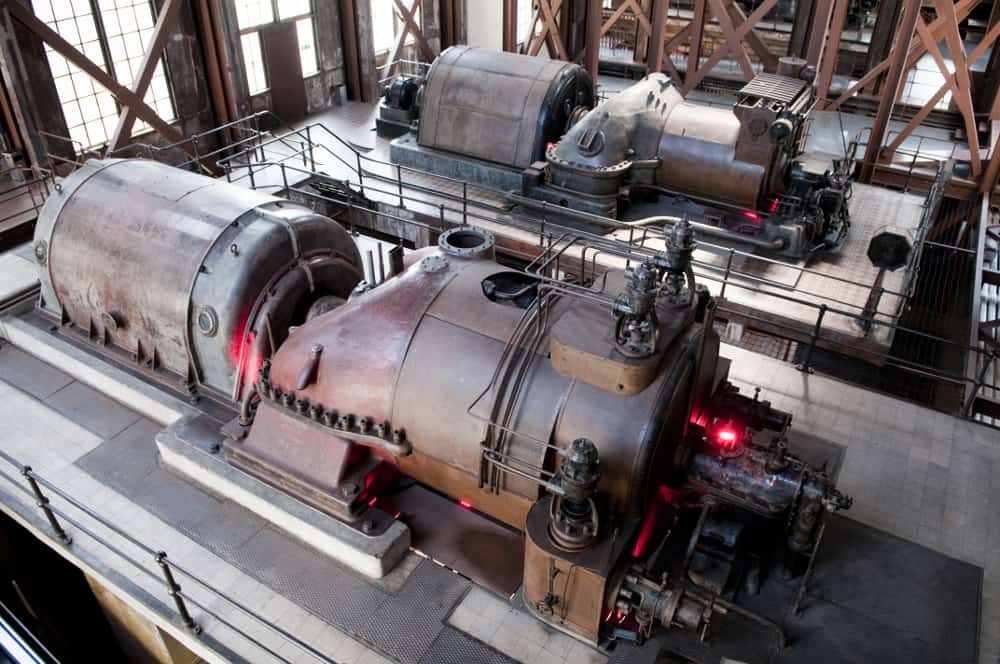Eddy Current Testing of Chiller Tubes: The Long-Term Value of Accurate Data

Preventative maintenance is a key step in halting operational breakdowns. Eddy current testing (ECT) techniques can detect cracking, corrosion, and other stress points that can hamper efficiency. One of the main anomalies within chiller tubes is moisture buildup, which causes rust and corrosion that can lead to larger issues in the future.
But ECT allows companies to pinpoint deviations early while assisting managers in drafting the appropriate maintenance strategies. By addressing problematic areas within chiller tubes, ECT aids in maximizing the lifespan of the unit. When supported by advanced software and high-quality instrumentation, ECT is the best method to secure valuable, accurate chiller tube testing data.
Common Chiller Tube Defects
Chiller tubes undergo daily stress as part of their normal, day to day functioning, and that stress can allow in rust and corrosion can take hold. Additionally, rust particles can trickle into the evaporator tubes of the chillers, leading to corrosion that damages the compressor and prevents water from chilling. Other common defects that can affect performance include:
- Pitting
- Freeze ruptures
- External corrosion
- Internal pitting
These relatively minor aberrations can result in costly repairs if left unattended. Luckily, NDT analysts can detect such malformations, including ones unseen by the naked eye, early in their formation using ECT techniques.
Tubing Inspection Equipment
Eddy current testing is one of the best tubing inspection methods because the probes are uniquely shaped to test chiller tubes. The ECT currents will detect abnormal indications during testing, and the magnetic field from the currents will be disrupted in the event of irregularities found within the tubes. The best equipment for the job includes a testing instrument that allows simultaneous injections and multiplexed frequencies. When combined, these two features offer the following benefits:
- Improved efficiency
- Increased inspection speed
- Remote field testing (RFT)
The multi-tier frequencies can discover a wide array of flaws, ranging from surface cracking to deep indications below the surface. The best instrument should be capable of testing most tubing materials, including carbon steel or magnetic alloys, and feature high-quality data management functionality that includes ample data storage and processing. Cutting-edge instrumentation can help inspectors detect minor flaws just beginning to develop—flaws that lower-quality instruments or less effective techniques might overlook.
Example: A level 2 analyst must test a chiller tube as part of routine maintenance. Using a high-quality ECT instrument and the appropriate probes, the analyst discovers deposit corrosion within the chillers. After further investigation, the instrument exposed slime as the culprit behind the corrosion, stemming from inadequate water treatment. The analyst was able to recommend immediate repairs as well as a larger recalibration of the unit’s water treatment strategy to combat biological formations.
Further, ECT equipment should be portable and lightweight, with no need for a constant electric source of power or time-consuming setup times. Other types of nondestructive testing instrumentation, such as magnetic particle testing equipment, simply do not offer the same portability and software acumen as ECT equipment. Additionally, the advanced software powering today’s ECT instruments can help simplify data gathering and produce comprehensive, easily digestible result reports.
The Perils of Substandard Data
Inaccurate data can lead to ineffective maintenance solutions that fail to address overarching problems within a unit. Compared to other NDT methods, ECT provides the most complete study of a chiller tube’s structural profile. To get the best results, companies should invest in quality ECT equipment provided by a reputable NDT company. The best NDT companies offer powerful software, quality instrumentation, and enhanced probe designs, all of which boost detection prowess.
One of the best ways to get effective readings is to use automated analysis software, which analyzes data from heat exchanger tube inspections. The automated function eliminates mundane routines and eliminates errors that may arise from manual processes. Overall, automated analysis software allows users to focus on finding flaws, resulting in more reliable data.
Example 1: An analyst inspects chiller tubes using a substandard ECT instrument that does not have the necessary software capabilities. As a result, he spends more time adjusting to variables and completing other routine tasks that use up time that could have been devoted to finding additional defects. The test produces adequate data, but it fails to read a minor indentation that can lead to a freeze rupture down the line.
Example 2: Another analyst performs the same test on the same chiller tubes using better equipment. Automated software streamlines the data—including historical information—allowing the analyst to see all indications on a simple, intuitively laid out interface, including trends over time. The high-quality mapping and detailed resolution allows the analyst to outline the nature of the flaw, as the software analyzes and reports the data as it’s being acquired. The better instrument gives the analyst enough leeway to find the early trappings of a freeze rupture.
Efficient Eddy Current Testing of Chiller Tubes Requires Effective Instrumentation
Effective ECT techniques and instrumentation help eliminate costly overhead by detecting problems in the early stages before they affect corresponding components. This allows companies to avoid extensive, costly repairs down the line and extend the lifespan of the assets while improving functionality.
When seeking out eddy current technology for testing chiller tubes, it’s vital to invest in the best equipment from an experienced company that can also provide tailored inspection plans. ECT is the ideal choice of chiller tube inspection techniques, but it takes first-rate instrumentation and software to support truly comprehensive inspections that will provide analysts with the accurate data they need to catch flaws early and promote a safe and secure workplace environment.
Zetec provides ECT equipment and training plans for companies in industries such as aerospace, oil and gas, and manufacturing. Contact Zetec today to get a custom plan and cutting-edge equipment for chiller tube testing.

Zetec’s designers are industry-leading experts in ultrasonic and eddy current technologies, and we can help you navigate any of our NDT testing solutions or devices.
